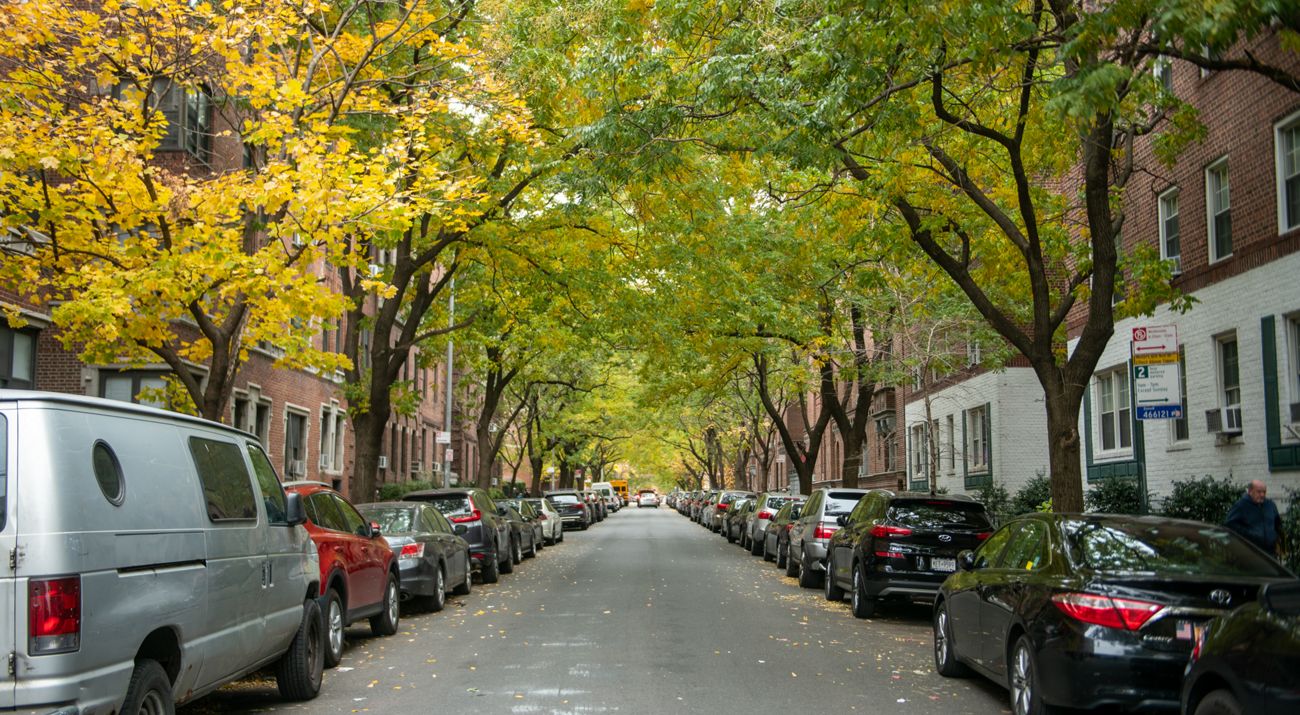The Nature Conservancy Publishes Fact Sheets on Tree Canopy for Every New York City Council and Community District
Media Contacts
-
May Yeung
Public Relations Manager
Email: may.yeung@tnc.org
New Yorkers can now easily learn about tree canopy, both existing and potential, in their communities. Fact sheets with data on tree canopy—the land area covered by branches and leaves of trees—for every City Council District and Community District in New York City are now available on nature.org. Each fact sheet includes information about canopy cover in the respective district and how it compares citywide, as well as opportunities for increasing canopy in that area. Offered as a tool to spark conversations and help communities take action, this information can be viewed and downloaded for free at nature.org/nyccanopy.
Mike Treglia, lead scientist for The Nature Conservancy’s Cities Program in New York, said, “Neighborhood specific information on tree canopy—and how to expand it equitably—can help New Yorkers face climate change. These fact sheets provide local residents and organizations, among others, with relevant information that can help them expand and support the urban forest in ways they need and desire."
Increasing trees and other vegetation is a high-impact nature-based solution that reduces the threat of extreme heat, while providing a wide suite of other benefits such as capturing air pollution, helping manage stormwater, storing carbon and generally supporting people’s physical and emotional wellbeing. In addition to providing shade from the summer sun, at high enough densities tree canopy and other vegetation can lower local air temperatures.
Due to climate change, extreme heat events have been growing more frequent and severe. Heat is the leading cause of weather-related fatalities nationally, and New York City, like other cities, is especially vulnerable to extreme heat due to the urban heat island effect. Further, a legacy of discriminatory practices, such as redlining, has contributed to low-income and Black New Yorkers being more at risk to extreme heat.
Forest for All NYC, a diverse coalition of over 120 organizations working to support the New York City urban forest and advance the New York City Urban Forest Agenda, has called for equitably increasing tree canopy cover to 30% by 2035, from 22% in 2017. That target was informed by a Nature Conservancy study on the opportunity for more tree canopy in the present-day landscape published in 2022 in the journal Frontiers in Sustainable Cities.
The new fact sheets illustrate the potential to increase tree canopy in all districts across New York City. By focusing on individual districts, they also permit a more nuanced understanding of opportunities and challenges at a local level. For example, in many areas with lower-density development, there are notable opportunities to add trees on private property. In contrast, many of the most heat-vulnerable areas are densely developed, with little opportunity for more canopy, suggesting other strategies will be needed to create space for new trees.
A blog post by the NYC Environmental Justice Alliance and The Nature Conservancy’s New York Cities Program as part of the Just Nature NYC partnership has also been published to provide additional detail and information on vegetation density and its relationship to cooling across the city.
“When community wants, needs and concerns are centered in thoughtful planning and ongoing investment in the urban forest, trees and their canopy can promote thriving communities, help safeguard public health and even contribute to local employment opportunities,” said Emily Nobel Maxwell, director of The Nature Conservancy’s Cities Program in New York. “In the wake of critical legislation requiring the creation of the first-ever citywide plan for the NYC urban forest, we hope these fact sheets will be community resources that increase dialogue among residents and leaders, ultimately motivating decision-makers to put more tree-friendly programs, policies and funding in place to support health, wellbeing, resilience and equity."
The Nature Conservancy is a global conservation organization dedicated to conserving the lands and waters on which all life depends. Guided by science, we create innovative, on-the-ground solutions to our world’s toughest challenges so that nature and people can thrive together. We are tackling climate change, conserving lands, waters and oceans at an unprecedented scale, providing food and water sustainably and helping make cities more resilient. The Nature Conservancy is working to make a lasting difference around the world in 81 countries and territories (40 by direct conservation impact and 41 through partners) through a collaborative approach that engages local communities, governments, the private sector, and other partners. To learn more, visit nature.org or follow @nature_press on X.
